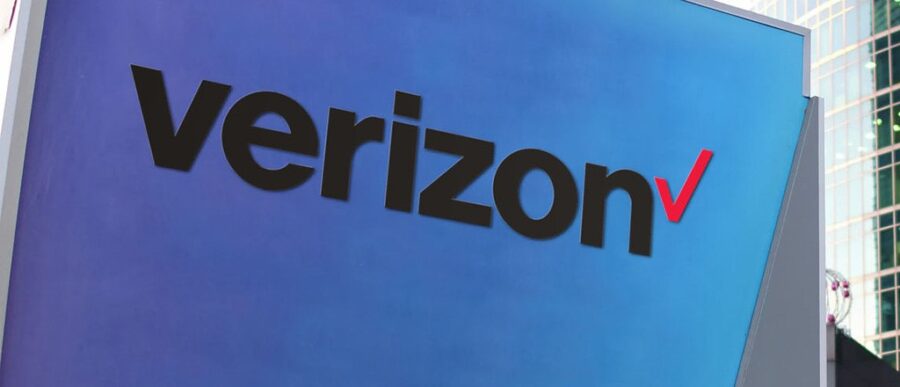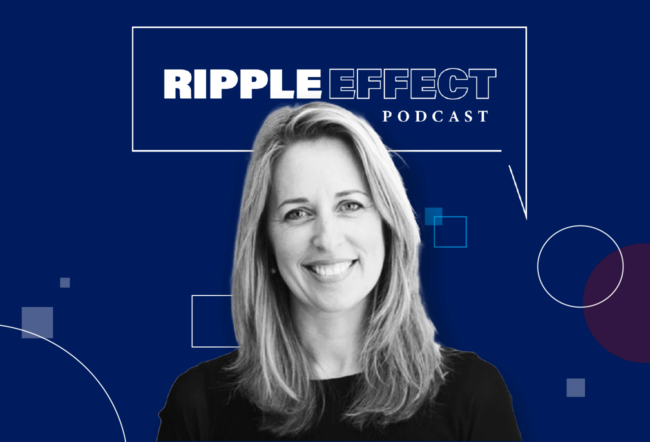Eight years ago, almost to the day, Ivan Seidenberg retired as chairman and CEO of Verizon Communications Inc. In his decade at the helm, he transformed the former Baby Bell into the nation’s largest wireless provider, created from some of the largest mergers and acquisitions deals at the time that reshaped the telecom industry. Early on, Seidenberg saw the promise of broadband: He reportedly said in 2004 that a communications revolution was starting and it will be “all broadband, all the time.”
At the recently held Wharton Leadership Conference, Seidenberg shared the lessons he has learned from working in telecom for a half century, which was a time of great upheaval for the industry. He had a front seat to such pivotal events as the 1984 breakup of AT&T into seven regional Bell operating companies, the rise of independent long-distance phone companies like MCI (which Verizon bought in 2006), passage of the Telecommunications Act of 1996 that sought to open up competition to phone companies, and the rocketing popularity of mobile devices.
Despite these major industry shifts, Seidenberg kept it simple at Verizon. He said he narrowed down the company’s priorities to a handful, made sure everyone understood and believed in the corporate mission, shielded his employees from outside flack, and never let up on the competition. In so doing, he built Verizon into a wireless powerhouse in an industry where many telecom providers struggled to innovate away from landline phones.
Lesson No. 1: Own the Future
“I worked in a utility that people thought had no growth, no future, and was just a royal pain in the neck,” Seidenberg recalled, at the conference. In 1995, he was offered the job of CEO at New York/New England Exchange or NYNEX. He accepted the job, but also told his boss and predecessor Bill Ferguson that he would be making big changes. Seidenberg knew that the company couldn’t operate as usual with telecom changing rapidly.
“We can’t make it on our own,” Seidenberg said he told Ferguson, bluntly. “We can’t do it. We can’t outgrow our legacy. We have to fix our culture. We have to find new growth opportunities. We have to fix our relationship with our customers, and we have to do a lot of work with government to let them understand what [it is they’re restricting us from doing] — so we can go it alone.”
As a regional phone company, NYNEX’s growth opportunities were limited. It needed to expand its footprint. Later, a partnership between its cellular business and the wireless unit of Bell Atlantic Corp. would be beneficial. (Bell Atlantic, also a Baby Bell, had acquired Metro Mobile, which broadened its cellular coverage to more states.) Meanwhile, the 1996 Telecom Act began ushering in a new wave of competitors to incumbent phone companies.
“I worked in a utility that people thought had no growth, no future, and was just a royal pain in the neck.”
Under the gun, telecom firms sought mergers to cut costs and benefit from economies of scale. In 1997, NYNEX and Bell Atlantic combined in a $23 billion transaction. Three years later, it would acquire GTE Corp. in a $52.8 billion deal to create Verizon. These were just two of several transactions Seidenberg would make.
During his tenure as CEO, Seidenberg said he and his team bought around 100 companies and invested $150 billion in capital. “We built the wireless business. We built FiOS [fiber-optic service],” he said. (FiOS was met with much skepticism when it was first announced because of its hefty price tag to bring fiber-optic cables straight to the home, enabling much faster speeds than connecting to the curb.) “We did things that nobody ever thought a utility would do. We converted our business from a utility to a technology-based communications company.”
Lesson No. 2: Sharpen Your Focus
In the telecom industry, Verizon has built a reputation as having the best wireless network. That’s not an accident. Seidenberg believes that a company must focus on its most important goals. Too many targets just distract a firm from homing in on what’s key. At Verizon, he gathered his lieutenants and told them to whittle down the list of company priorities. They started with about 100 items and cut it down to two or three, all supporting its main mission: “We’re going to build the best networks.”
Once a clear mission was set, the CEO’s job is to “articulate the strategy with conviction but then give the organization the time and the flexibility to implement it in a reasonable way, and take the heat” from outsiders so the company won’t be distracted, Seidenberg said. For instance, Verizon’s board questioned whether it was prudent to spend a fortune on wireless licenses when the business hasn’t yet turned a profit. He stuck to his guns. “It was my job to make sure I ran interference,” he said. “You need to be tough. You need to be demanding, but you’ve got to run interference and give people a chance to do their jobs.”
Seidenberg said it was critical for every employee to believe in the mission. Top management made sure to communicate it to the rank and file. He liked having town hall meetings. “People had a chance to talk to us. All our leaders solicited information. But at the same time, we had a chance to broadcast and communicate the goals of the company,” he said. Getting all on board was key. “What binds people together is a mission or a purpose that’s bigger than themselves” or their department. He said if leaders communicate this mission well, the employees will respond.
Lesson No. 3: Build Accountability in the Company
Seidenberg believes in tracking performance. But the problem with large companies is every department has its own internal metrics. Verizon itself had 22 business areas. So he decided to develop a uniform yardstick: churn, or customer cancellations of service. “We were the first company that actually measured churn,” he said. “Every place we went, we [asked the regional unit], ‘How are you doing on churn?’” (Today, churn is a key industry metric of a telecom company’s performance.)
But what really brought the company together and created a system of accountability was the Sept. 11 terrorist attacks. Verizon is the incumbent phone company in New York. With the city in crisis, he said Verizon employees pulled together to bring connectivity back to Wall Street as fast as possible. They not only did their jobs but also made sure they helped others do theirs. “[That] was what 9/11 was all about,” he said. This system of accountability still exists in Verizon today, he added. It is one of the company’s four core values: respect, integrity, operational excellence and accountability.
“What binds people together is a mission or a purpose that’s bigger than themselves.”
Lesson No. 4: Never Let Up on the Competition
When Apple’s Steve Jobs introduced the iPhone in 2007, he gave exclusive access to the device to AT&T. Seidenberg recalled the circumstances behind such a major competitive loss, and how Verizon reacted. “When Apple developed the iPhone, Steve Jobs came to see us and asked us a bunch of questions,” he said. “At the end of the conversation, he says to us, ‘I’m only going to pick one carrier, and I’m going to pick the carrier that’s using the global standard.” At the time, it was the GSM mobile standard, which is what AT&T’s network used. Verizon had CDMA.
The iPhone went on to become an overnight sensation, and it was only available on the AT&T platform. But Verizon did not give up. “Every year, I would go visit Steve and say, ‘So, when are you going to put Verizon in your phones?’” Jobs would rebuff him, saying he had a 5-year exclusivity agreement with AT&T. “But in the fourth year when I went to see him, he said to me, ‘You know, I was in my dentist’s office the other day, and … he was complaining about his dropped calls on AT&T’s network.”
Seidenberg went back to the office and relayed what he heard. His then-COO, Lowell McAdam, who would later replace him as CEO, had an idea. Why not offer to install a Verizon cell tower on Apple’s campus for free so Jobs can try the network? McAdam predicted that “within 30 days, he’s going to call you up and say, ‘I want my iPhone on your network,’” Seidenberg recalled. “That’s exactly what happened.”
Thirty days later, Jobs called Seidenberg and asked him to visit Apple. “We cut a deal,” he said. “We ended up in the iPad first, and then we ended up in the iPhone.” The lesson: Don’t tire of “constantly digging and digging and grinding around your competitive positioning in the marketplace,” he said.
In the years that Verizon was waiting to get the iPhone, it also made a countermove. “We were at a disadvantage [to AT&T], and we knew it,” Seidenberg said. “So we went to Google. We said to Google, ‘Work with us on developing a platform that can go on a phone that will give us a chance to compete with the iPhone.” At first, Google said no, but a few weeks later, the company changed its mind. “The birth of Android on mobile devices [came about] because we started a conversation with Google” about finding an alternative to the iPhone operating system, iOS, he explained.
“The birth of Android on mobile devices [came about] because we started a conversation with Google….”
Lesson No. 5: Hire Future-minded People
Looking ahead, Seidenberg waxed enthusiastic about the future of 5G, which is the next generation of wireless connectivity that promises to match current wired broadband speeds. “The transformation that 5G creates is pretty amazing,” he said. “You get better speeds and you’ll be able to deliver more data. Your latency goes down, meaning that the speed of connections gets improved.” Seidenberg said it could usher in new capabilities, such as remote surgeries, because of less lag. “There are all sorts of new use cases that get developed around better latency.”
The task of leading the 5G race now falls on the current Verizon CEO, Hans Vestberg, who was its former chief technology officer. Seidenberg said Verizon chooses a CEO with capabilities to position the company best for the future. His own successor was McAdam, who “grew up in the wireless company, and his successor has grown up in the technology business,” Seidenberg said. “We each bring a different capability to the table.”
That’s a lesson for other companies, too. “The person who ran the great operations for the past 10 years … should be rewarded,” Seidenberg said. “But you do need to make sure you populate your organization with lots of people that have an interest in, and curiosity about, the future.” And as companies try different strategies to lead in an uncertain future, Seidenberg said a common piece of advice is not to fear failure. This is his take: “Make sure your failures are little, and your successes are big.”



